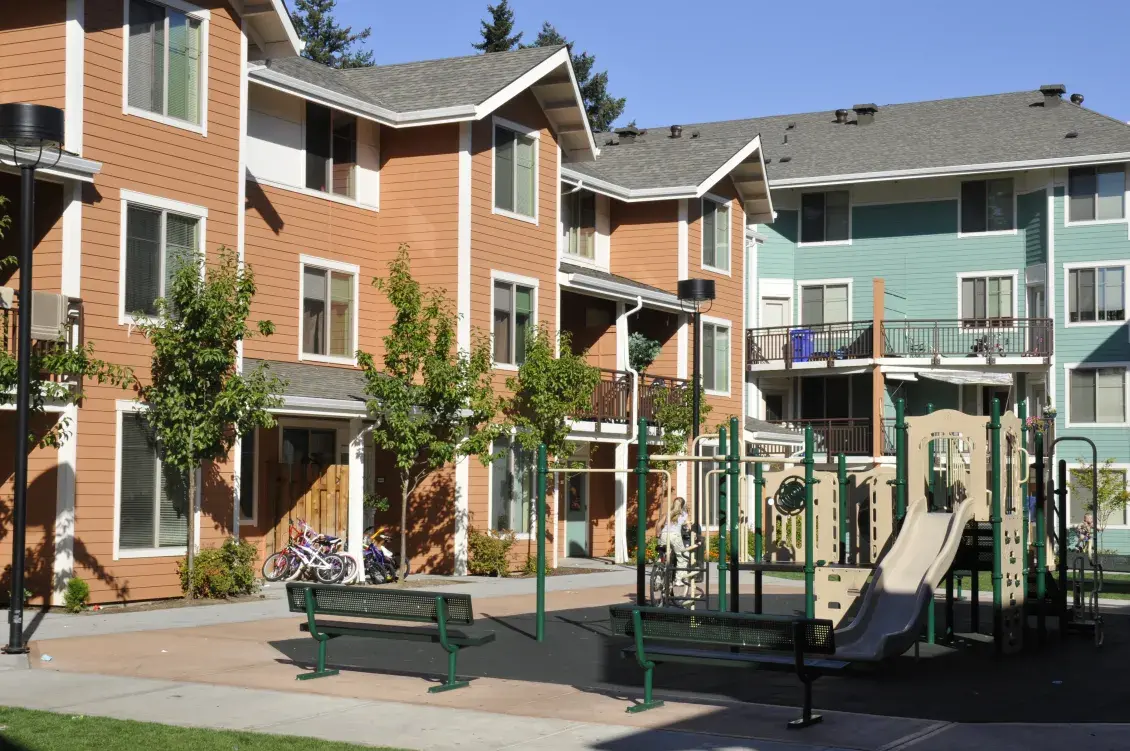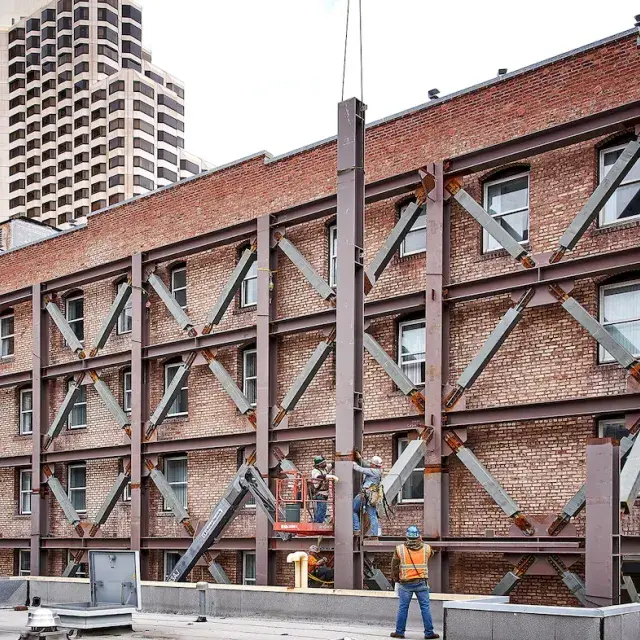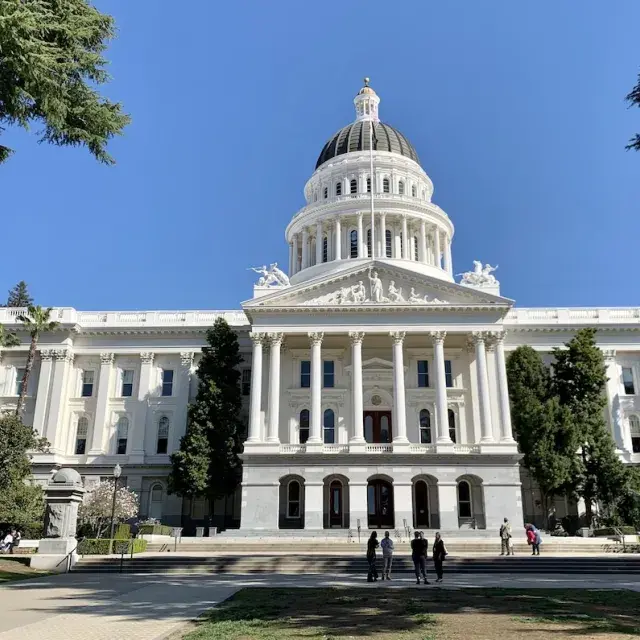A coalition of bipartisan lawmakers has reintroduced the Affordable Housing Credit Improvement Act (AHCIA) in the U.S. House of Representatives. This legislation seeks to expand and strengthen the Low-Income Housing Tax Credit (Housing Credit) — the federal government’s most effective and proven tool for building and preserving affordable rental housing across the country.
Led in the House by Representatives Darin LaHood (R-Ill.), Suzan DelBene (D-Wash.), Claudia Tenney (R-N.Y..), Don Beyer (D-Va.), Randy Feenstra (R-Iowa), and Jimmy Panetta (D-Calif.), the 2025 AHCIA was introduced with more than 100 bipartisan original cosponsors — a record-setting show of early support that surpasses the previous high of 66 original cosponsors in the 118th Congress. A companion bill in the Senate is expected to be introduced later this month or in early May.
“The introduction of the Affordable Housing Credit Improvement Act represents a critical step toward addressing the housing supply crisis that impacts communities of all sizes—urban, suburban, and rural alike," said Shaun Donovan, Enterprise’s CEO and president. "By expanding and strengthening the Low-Income Housing Tax Credit, this legislation will help build and preserve hundreds of thousands of affordable homes, making a meaningful difference in the lives of families, seniors, and individuals across the country. With more than 100 bipartisan cosponsors from more than 30 states, the bill's strong support reflects a consensus that transcends partisanship and affirms that increasing the supply of affordable homes is a nationwide necessity."
What the AHCIA Would Do
The AHCIA includes a comprehensive set of approximately two dozen provisions aimed at enhancing the Housing Credit’s reach, efficiency, and impact. These proposals are grounded in decades of bipartisan legislative work, stakeholder input, and proven results. The bill would:
- Increase Housing Credit authority by 50%, enabling states to finance hundreds of thousands of additional affordable rental homes over the next decade.
- Reduce the “50% test” to 25% for developments financed with tax-exempt bonds, unlocking more resources for affordable housing by lowering the bond volume required for 4% Housing Credit eligibility.
- Provide “basis boosts” for properties serving extremely low-income tenants, rural communities, Native American populations, and other historically underserved groups.
- Align program rules to improve access for veterans, students, and survivors of domestic violence and human trafficking—ensuring that at-risk populations are not left behind.
- Enhance state housing agency tools, helping them allocate Housing Credit resources more efficiently, preserve affordability, and reduce bureaucratic delays.
According to estimates by Novogradac, the AHCIA would enable the development or preservation of nearly 1.6 million additional affordable homes over the next ten years—homes that would otherwise not be possible under current law.
Decades of Proven Impact
Since its creation in 1986, the Housing Credit has financed the development or preservation of approximately four million affordable homes, benefiting more than 9.28 million low-income households — including families with children, seniors on fixed incomes, veterans, and individuals with disabilities. The program leverages private-sector investment to meet public needs, making it a model for cost-effective, results-driven housing policy.
In the previous Congress, the 2023 version of the AHCIA became the most cosponsored tax bill in the House, with support from nearly 60% of all Representatives and 35 Senators. This growing bipartisan momentum reflects widespread recognition that the Housing Credit works—and that now is the time to expand its reach.
Broad Support from Advocates and Practitioners
The reintroduction of the AHCIA comes on the heels of a successful legislative briefing hosted on March 25 by the ACTION Campaign, a national coalition of over 2,400 organizations co-chaired by Enterprise Community Partners and National Council of State Housing Agencies. I had the opportunity to welcome the packed room of more than 100 housing advocates, developers, and congressional staff gathered to hear from experts who are using the Housing Credit to transform communities and discuss the AHCIA’s potential.
AHCIA lead sponsor, Rep. LaHood introduced the panel, noting that there is “no greater time than now” to enact major Housing Credit provisions. Rep. Panetta and Senator Cantwell both spoke during the reception after the briefing and shared their commitment to expanding the Housing Credit, as did Shaun Donovan and NCSHA executive director Stockton Williams. Read the ACTION blog post recapping the event for additional information on the panel experts, and to view the presentations and photos from the event.
The Path Forward
At a time when more than 11.3 million renter households spend more than half their income on rent — well above the 30% threshold considered affordable — the AHCIA offers a timely and powerful solution. By increasing the supply of affordable rental housing, preserving existing homes, and improving Housing Credit program operations, the bill would help address a deepening affordability crisis impacting families in urban, suburban, and rural areas alike.
In the early morning hours of April 5, the Senate voted 51-48 to pass a modified budget resolution, largely along party lines. This is the next step in advancing a large, filibuster-proof reconciliation bill that includes tax and other policies. Because the Senate’s resolution is different than both the one it passed earlier this year and the one the House passed in February, it now goes back to the House for approval, as both chambers of Congress must pass identical budget resolutions to begin drafting the actual reconciliation legislation. If they succeed, it will be the main legislative vehicle for advancing much of the Trump-Vance Administration’s legislative agenda. However, the new Senate resolution is already facing pushback in the House, as well as within the Senate, including on the amount instructed for deficit reduction, how to pay for extensions of the Tax Cuts and Jobs Act of 2017, and more.
The new Senate resolution instructs the Senate Finance Committee to make up to $1.5 trillion in new tax cuts. However, the resolution also uses an approach called “current policy baseline,” which assumes that there are no costs to extend the expiring tax cut provisions from 2017 beyond their expiration dates. This approach could pave the way for including key Enterprise tax priorities in the reconciliation package, including expanding the Housing Credit.
As Congress proceeds with reconciliation, Enterprise urges our affordable housing partners to underscore to their federal decision-makers that it is critical to include the AHCIA’s affordable housing production provisions in any tax package. The Housing Credit’s track record of success, deep bipartisan support, and alignment with private-sector investment make it one of the most effective federal programs in existence today.



